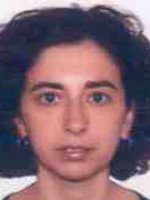resumo
In the current era of human life, we face an increased consumption of nonsteroidal anti-inflammatory drugs (NSAIDs). Nevertheless, NSAIDs are not entirely metabolized by humans and are thus excreted into domestical effluents, whereas expired medications are recurrently directly disposed into wastewaters. Several studies have already demonstrated that an extensive diversity of pharmaceuticals is present in aqueous effluents and is therefore a matter of serious concern with regard to wildlife and public health. In this perspective, this work is focused on the use of a liquid liquid extraction approach for the removal of NSAIDs from aqueous media. In particular, aqueous biphasic systems (ABS) composed of ionic liquids (ILs) and aluminum-based salts were used for the removal of diclofenac, ibuprofen, naproxen, and ketoprofen. With these systems, extraction efficiencies of NSAIDs up to 100% into the IL-rich phase were obtained in a single-step. Further, the recovery of NSAIDs from the IL medium and the recyclability of the IL-rich phase were ascertained aiming at developing a more sustainable and cost-effective strategy. On the basis of the remarkable increase of the NSAIDs solubility in the IL-rich phase (from 300- to 4100-fold when compared with pure water), water was used as an effective antisolvent, where recovery percentages of NSAIDs from the IL-rich phase up to 91% were obtained. After the "cleaning" of the IL-rich phase by the induced precipitation of NSAIDs, the phase-forming components were recovered and reused in four consecutive cycles, with no detected losses on both the extraction efficiency and recovery of NSAIDs.
palavras-chave
WASTE-WATER TREATMENT; PERSONAL CARE PRODUCTS; ENDOCRINE DISRUPTING COMPOUNDS; BIPHASIC SYSTEMS; TREATMENT PLANTS; AQUATIC ENVIRONMENT; DRINKING-WATER; PHARMACEUTICAL RESIDUES; EMERGING CONTAMINANTS; 2-PHASE SYSTEM
categoria
Chemistry; Science & Technology - Other Topics; Engineering
autores
Almeida, HFD; Marrucho, IM; Freire, MG
nossos autores
agradecimentos
This work was developed in the scope of the project CICECOAveiro Institute of Materials (ref. FCT ULD/CTM/50011/2013), financed by national funds through the FCT/MEC and cofinanced by FEDER under the PT2020 Partnership Agreement. H.F.D.A. and I.M.M. acknowledge FCT for doctoral grant SFRH/BD/88369/2012 and the 2012 FCT Investigator Program, respectively.




